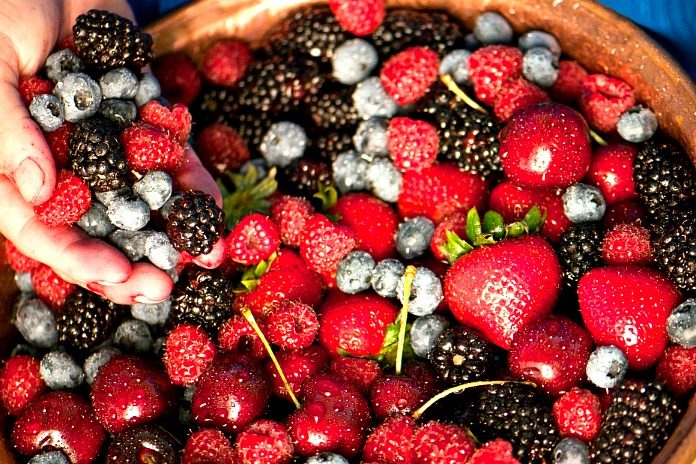
Oregon is a veritable cornucopia, producing a “horn of plenty” filled with high quality tree fruit, berries, and a type of nut not grown anywhere else in the United States. Newly released national statistics show the state is a leader in production of many types of non-citrus fruits. Many of these delicious crops are in season or will be soon.
“We produce a variety of high quality fruits and nuts that are valued in our local markets, national markets, and in export markets around the world,” says Lindsay Eng, Director of Market Access and Certification for the Oregon Department of Agriculture.
More than 225 different agricultural commodities are produced in Oregon. Many of them are fruit crops. Oregon leads the nation in production of several berry crops. But behind the numbers is the fact that the state’s climate and fertile soils– along with the skill and expertise of the growers– produce a great tasting, high-quality food product that is enjoyed by consumers far and wide.
Seasonally, berry crops first herald Oregon’s harvest season, usually in early summer. A cool spring delayed many agricultural crops a couple weeks. Consumers will not have to worry about a lack of Oregon-grown fruits and nuts– they just may need to be a bit patient. Strawberries are available at local markets and stands. Soon to follow will be blueberries, blackberries, raspberries, and sweet cherries.
“Get out and start experiencing Oregon fruits right now,” advises Eng.

The US Department of Agriculture’s National Agricultural Statistics Service (NASS) has published its non-citrus fruits and nuts summary for the 2016 growing season. A majority of the crops detailed in the report are grown in Oregon and, in fact, some are exclusive to the state. One-hundred percent of the nation’s commercial blackberries and boysenberries come from Oregon. Marionberries, a cultivar of the blackberry, is also 100 percent Oregon.
The statistical summary shows there were 7,000 acres planted in commercial blackberries last year in Oregon, producing 58 million pounds with a value of more than $26 million– down 32 percent from 2015’s production value due to a sizable drop in price paid per pound despite more berries grown. Marionberry production last year jumped 30 percent to 29.3 million pounds and is responsible for about half of the total value for blackberries.
Oregon also grows virtually all of the nation’s boysenberries despite only having 340 acres harvested last year. Production value fell about 50 percent to $1.3 million.
One of the most iconic of crops in Oregon is the strawberry. Overall production is a mere fraction of historical highs decades ago, but Oregon’s strawberry industry still ranks fourth in the nation in production. Neighboring California absolutely dominates the nation’s strawberry scene. In Oregon, more than 10.3 million pounds were harvested from 1,100 acres in 2016. By comparison, in 1988, Oregon had 7,800 acres in strawberry production with more than 100 million pounds harvested. Last year, California had 38,500 strawberry acres producing nearly 2.8 billion pounds.
Blueberries continue to be a perennial Oregon success story, setting a record high production last year of 116 million pounds valued at $104 million, same as the previous year. Nearly 12,000 acres of Oregon blueberries were harvested in 2016, more than double the acreage of 2009. Washington emerged as the national leader in blueberry production last year with Oregon closely behind in second place.
All in all, Oregon agriculture continues to supply consumers from Tualatin to Tokyo with a variety of high quality fruit. Oregon may not challenge states like California in sheer volume, but it can make the case that the quality of berries, tree fruit, and nuts produced within its borders can’t be beat.









